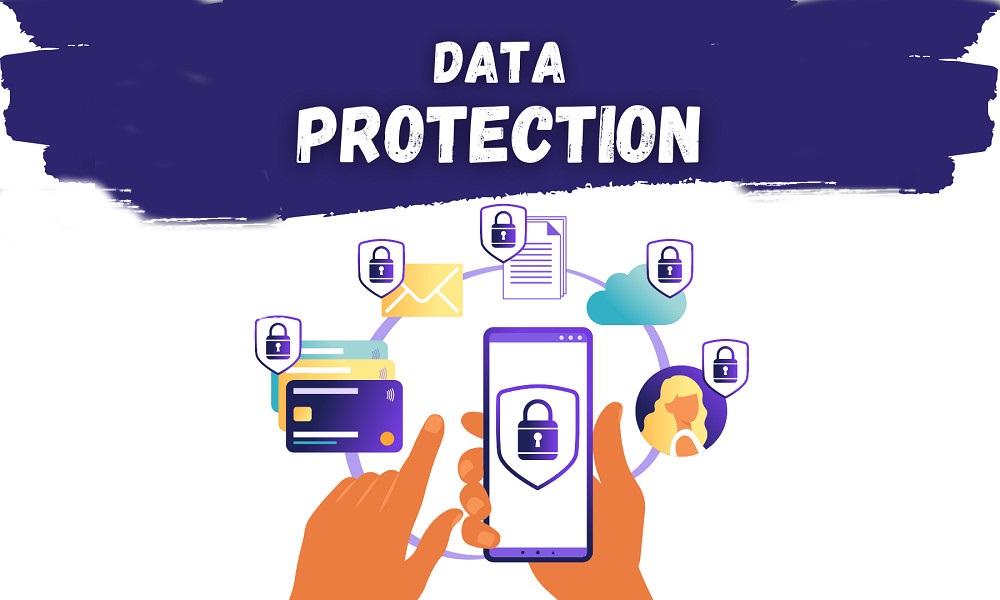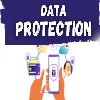In today's world of pervasive surveillance and data mining, safeguarding sensitive information is more crucial than ever before. Like any other business, small to medium-sized businesses (SMBs) are subject to the challenges posed by the digital age, where data is a coveted asset. Daily, cyber criminals infiltrate organizations (source: https://cyware.com/category/breaches-and-incidents-news), resulting in costly breaches. A data breach affects the organization and the individuals whose data is being stolen. To promote a culture of awareness and protect privacy, here are nine ways SMBs can strengthen their data security.
Educate, Educate, Educate:
At Cyber Op Source we really believe this. The human element remains the weakest link in any cybersecurity strategy. Please don't take our word for it. Look at the 2023 Data Breach Investigations Report (DBIR) and see for yourselves. By educating yourself and your staff, SMB can begin to foster a culture of cybersecurity awareness. Businesses can empower employees to recognize and respond effectively to potential threats. Regular training sessions on ransomware, phishing attacks, social engineering, and other cyber threats are essential for creating a watchful and informed workforce. This training should occur at least once a year. On this blog, we have spoken about having multiple layers of defense (https://www.cyberopsource.com/articles_and_case_studies/detail/3/multi-layered-defense). We can take advantage of that mindset in this situation. For instance, if employees are aware of phishing threats, but the organization also has robust email filtering systems and regular security audits, the overall protection is enhanced. SMBs can also enforce strict access controls and ensure employees only have permissions required to do their jobs, and guess what? You have now further enhanced your protection. This additional measure bolsters protection and allows staff to perform their duties efficiently without unnecessary security constraints. Sites such as Udemy, Coursera, Pluralsight, and Cybrary offer a range of cybersecurity courses, covering topics such as ethical hacking, network defense, and security awareness training. For news and threat intelligence, CyberWire, Krebs on Security, and The Hacker News are three of many sources that provide free daily news briefs that include cybersecurity news and analysis. They are valuable resources for staying informed about the latest threats.
Implement Strong Access Controls:
We briefly mentioned this in the prior section, but restricting access to sensitive data is a fundamental step in data protection. It is important to implement strong access controls and only grant staff permissions necessary for their specific roles. SMBs need to find time to regularly review and update access privileges to ensure they align with current business needs. Organizations can also require their staff to use multiple authentication factors, such as a password and a one-time code sent to their mobile device. This provides an additional level of security that goes beyond the conventional use of passwords. SMBs that have the staff to support it can also implement a Security Information and Event Management (SIEM) system to help monitor and audit data access to detect and respond promptly to any unusual or unauthorized activities.
Encrypt Sensitive Data:
In the event of a security breach, encrypted data acts as an additional layer of defense, which has always been our goal. Too often, we hear or read about organizations that are breached and sensitive data is not encrypted. Organizations can implement encryption for sensitive information in transit and at rest. As owners of SMBs, you will often hear the terms in transit and at rest. Just to keep things simple, we will think of things such as HTTPS or VPN for in-transit. At rest, organizations can use tools such as Bitlocker or Self-encrypting drives. Cloud services such as Azure SQL and Amazon Aurora also offer database-level encryption. When implemented correctly, these tools help provide an extra layer of security. This ensures that the data remains unintelligible even if unauthorized access occurs without the proper decryption keys. However, it's necessary to underscore the importance of robust key management practices when thinking of encrypting data. Efficient key management ensures secure encryption key generation, distribution, storage, and disposal of keys. Without proper key management, the efficacy of encryption is compromised. By taking the steps outlined above, you have added another layer of defense.
Secure Network Perimeters:
A strong and secure network is essential for implementing an effective data protection strategy. It serves as the foundation for safeguarding valuable information from potential threats. To shield against external threats, employing a variety of network principles and techniques is essential. Small and medium-sized businesses (SMBs) may opt for solutions like firewalls and intrusion detection systems, coupled with regular security protocol updates. Remember we spoke about having multiple layers of defense? Implementing network segmentation further strengthens defense mechanisms. Let's go further: monitoring network traffic is a key practice to detect unusual activities that may signal a potential breach.
This all sounds good, but selecting the appropriate tools for the job can be a nuanced task. It's crucial to recognize that not all network devices are created equal. The ability to view incoming and outgoing traffic hinges on the specific design and devices employed in your network. For instance, we recommend our customers invest in dedicated devices tailored for router/firewall combinations. It's worth noting that a misconfigured network poses inherent risks, underscoring the importance of seeking professional assistance. David Suchomel at Cyber Op Source stands out as a leading expert in network security and architecture (I know it's a shameless plug, but it is true!).
Additionally, tools like Wireshark or SIEM can play a pivotal role in inspecting network traffic and identifying potential security concerns.
Regularly Update Software and Systems:
Outdated software and systems kill! Literally! They are vulnerable to exploitation. Let's explore how. Before hackers attack you, they start by doing reconnaissance. They scan, poke, and prod, looking for a way in. Having out-of-date software and systems is that way into your network, especially if it is software or systems exposed to the Internet (I can see those hackers salivating now). As an SMB, you should regularly update all software, including operating systems, antivirus programs, and applications. Applying patches promptly helps close vulnerabilities and enhances the overall security posture. The best part is most systems provide free software updates, whether your OS is Windows (Windows Server Update Services), Mac (Software Update or Homebrew), or Linux (APT & YUM). You can also enable them to update automatically. You can do the same with mobile devices. The software installed across these devices and platforms can also be easily updated. So please keep your software and systems updated!
Backup Data Regularly:
Organizations should be implementing regular data backups to prepare for the unexpected. One of our favorite quotes here at Cyber Op Source is not if but when. Having up-to-date backups ensures that critical data can be restored promptly in the event of a cyber attack, accidental deletion, or hardware failure. Depending on the size of your organizations, easily accessible tools such as Time Machine on Mac or File History and OneDrive on Windows can be enabled and utilized. However, for larger commercial entities with more complex infrastructures with things such as physical servers, virtual machines, and containerization then the backup solutions require more sophisticated approaches. In such cases, we recommend reaching out to us for tailored assistance, and Cyber Op Source would be happy to help (I know, plug, I can't help it). In addition to that, regardless of an organization size, SMBs should store backups in a secure offsite location to prevent data loss due to physical or digital disasters.
Enforce a Strict Bring Your Own Device (BYOD) Policy:
COVID increased remote work tenfold, and now remote work is utilized every; businesses must address the risks associated with personal devices accessing corporate networks. Organizations should implement a BYOD policy that outlines security requirements for devices connecting to the company network. SANS Institute provides free policy templates (https://www.sans.org/information-security-policy/) that businesses can use as a starting point for creating their BYOD policy (https://www.sans.org/white-papers/38230/). This policy should include mandatory security software, regular updates, and secure authentication methods. Remember, there are multiple layers of defense.
Monitor and Audit Data Access:
Monitoring and auditing are always touchy subjects, but it is essential for organizations to monitor and audit who is accessing their systems—especially individuals accessing their data. SMBs should implement robust monitoring tools to closely monitor who accesses sensitive data and when it is accessed. For on premises systems, many tools can be used. For instance, both open-source (ELK Stack) and commercial (Splunk) can be employed to accomplish this task. If your organization is in the cloud, AWS (CloudTrail) and Microsoft (Azure Monitor) also have solutions. In addition, organizations should regularly audit access logs to identify any suspicious activities or potential security breaches. In the end, you can have all of the monitoring and auditing in the world, but timely detection is critical to mitigating the impact of a data breach. Aside from detection, organizations should ensure they have well-defined plans in place to handle these situations (multiple layers of defense - you can do this!).
Collaborate with Cybersecurity Experts:
Small and medium-sized businesses may need more in-house expertise to navigate the ever-evolving landscape of cyber threats. Collaborate with cybersecurity experts or managed service providers to conduct regular risk assessments, implement best practices, and stay abreast of emerging threats.
Let's recap the key takeaways from our exploration of data defense strategies:
- Education is Key: Continual education empowers your workforce to recognize and respond to potential threats, forming the first line of defense against cyberattacks.
- Access Controls Matter: Restricting access to sensitive data through robust controls and regular reviews ensures that permissions align with current business needs, reducing the risk of unauthorized access.
- Encryption Adds a Layer of Defense: Implementing encryption for data in transit and at rest acts as an additional barrier, rendering sensitive information unintelligible even in the event of unauthorized access.
- Network Security is Foundational: A strong and secure network, coupled with tools like firewalls and intrusion detection systems, forms the backbone of an effective data protection strategy. Network segmentation and monitoring further enhance your defense mechanisms.
- Stay Current with Software Updates: Regularly updating software and systems is crucial to closing vulnerabilities, preventing potential breaches that could exploit outdated components.
- Backup Your Data: Prepare for the unexpected by implementing regular data backups. Whether utilizing tools like Time Machine or more sophisticated solutions for larger enterprises, having up-to-date backups ensures a swift recovery in the face of cyber threats.
- BYOD Policies Mitigate Risks: In an era of increased remote work, enforcing a strict Bring Your Own Device (BYOD) policy ensures that personal devices connecting to your network adhere to security standards, adding another layer of defense.
- Monitor and Audit Diligently: Continuous monitoring and auditing of data access help detect and respond promptly to any unusual activities, minimizing the impact of potential security breaches.
- Collaborate with Cybersecurity Experts: Recognizing the dynamic nature of cyber threats, SMBs should consider collaborating with cybersecurity experts or managed service providers. Regular risk assessments and the implementation of best practices can keep your defenses resilient against emerging threats.
In conclusion, embracing these practices collectively forms a multilayered defense against the digital challenges of our time. Take charge of your business's cybersecurity today. Assess your current practices against the strategies outlined in this article. Implementing these measures is a proactive step towards safeguarding your valuable data. Remember, your data's security is a shared responsibility, and for SMBs seeking additional assistance, cybersecurity experts and managed service providers, including our team at Cyber Op Source, are here to help navigate the ever-evolving landscape of cyber threats. Stay informed, stay vigilant, and secure your path to success in the age of data protection.
Writing Assistance Tools
OpenAI. (2023, January 29). ChatGPT: Conversational AI developed by OpenAI. Retrieved February 2, 2024, from https://www.openai.com/chatgpt
Grammarly. (n.d.). Grammarly: Writing Assistant. Retrieved February 2, 2024, from https://www.grammarly.com






No reactions